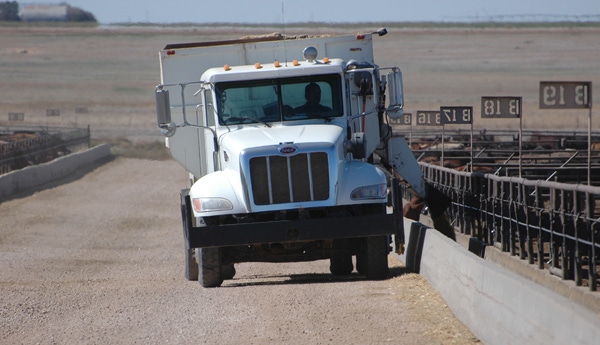“Though the high absolute price levels for stocker calves is scary for buyers and their lenders, the combination of high price levels and relatively little price rollback means that the value of putting weight on feeder cattle remains very high, in fact, well above what I would expect to see longer term," says Derrell Peel, Oklahoma State University Extension livestock marketing specialist.
October 26, 2013

Although heavy steer calves saw some pressure, calf and feeder cattle prices continued their steamy contra-seasonal price rally this week.
“The yearling market has held near record highs for over a month now, and calves are coming under pressure from an increased offering of high-risk un-weaned types,” explained the Agricultural Marketing Service (AMS) reporter on hand for the sale at St. Joseph Stockyard in Missouri.
Calf prices were unevenly steady with the deepest decline on steer calves weighing more than 500 lbs., according to AMS. Price gains were primarily for heifers.
“While price levels are soaring for green-conditioned yearlings and strings of fancy calves, the other side of the coin is extreme prejudice against small consignments of mixed quality and color (high-risk) un-weaned bawlers that sell far behind the former and for good reason,” AMS analysts say. “An untrained eye may find it unfair that there’s such a disparaging difference in the demand for calves that individually don’t appear that much different. But, if these calves were followed to their new home and through the growing stage of their life cycle, that untrained eye would be keen by next fall.”
In the meantime, Derrell Peel, Oklahoma State University Extension livestock marketing specialist explained in his market comments this week that feeder markets continue to offer high value of gain to stocker producers.
Subscribe now to Cow-Calf Weekly to get the latest industry research and information in your inbox every Friday!
“Though the high absolute price levels for stocker calves is scary for buyers and their lenders, the combination of high price levels and relatively little price rollback means that the value of putting weight on feeder cattle remains very high, in fact, well above what I would expect to see longer term.” Peel says.
Peel uses the example comparison of a steer weighing 476 lbs. bringing $181.38/cwt. ($863.37/head) at Joplin Regional Stockyards the previous week and one weighing 567 lbs. and bringing $172.68 ($979.10/head).
“Notice that the additional 91 lbs. of beginning weight only cost $1.27/lb., an important consideration as producers decide what weight to begin the stocker enterprise,” Peel says.
Assuming 250 lbs. were put on these steers in a 120-day winter wheat program and then marketed in February or early March, Peel pencils value of gain at $1.34/lb. for the lighter steers and $1.31 for the heavier ones.
“Perhaps most important, current feeder cattle futures prices for March and May would allow hedging with expected selling prices that are at or a bit higher than these current cash prices,” Peel says. “We would typically expect to see seasonally low calf and stocker prices in the next month; however, I don’t expect to see much seasonal weakness given the current market situation. In fact, strong feedlot and stocker demand may result in limited counter-seasonal strength in feeder cattle prices into November.”
You might also like:
8 Apps For Ranchers Recommended By Ranchers
10 Ways To Have A Stress-Free Weaning Day
Cargill Closure Announcement - How Much Can The Industry Afford?
Take A Laugh-Break! Enjoy Rubes Cartoons
Government Shutdown Underscores The Value Of Data
About the Author(s)
You May Also Like





